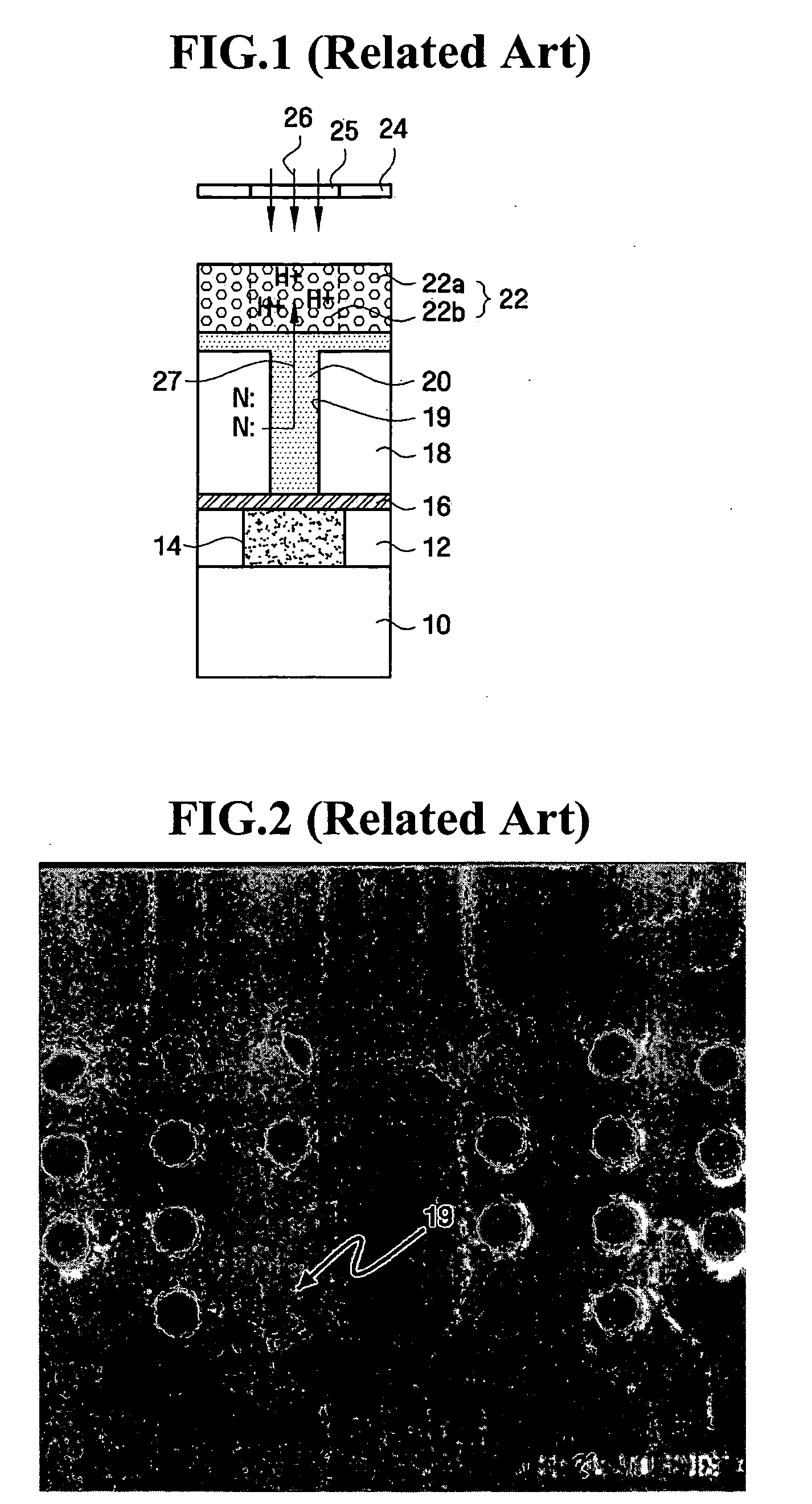Method of fabricating dual damascene interconnections of microelectronic device using diffusion barrier layer against base material
a technology of diffusion barrier layer and microelectronic device, which is applied in the manufacturing of semiconductor/solid-state devices, basic electric elements, electric devices, etc., can solve the problems of photoresist poisoning, degrading electrical properties of the lower interconnection, and reducing the depth of focus margin, so as to achieve the effect of improving properties and/or performan
- Summary
- Abstract
- Description
- Claims
- Application Information
AI Technical Summary
Benefits of technology
Problems solved by technology
Method used
Image
Examples
experimental example 1
[0065] After a CVD OSG (k=2.9) as an ILD was formed on a substrate to a thickness of 7,000 Å, a via was formed, and some base materials (N:) such as nitrogen or amine remained within the ILD as the result of an ashing process using nitrogen-based plasma. Subsequently, after an HSQ-based material (in the above formula (1), R is octadecyl, x is 0.24, and y is 0.76) was formed on the CVD OSG to a thickness of 2,000 Å, photoresist for ArF was formed thereon. Then, a photoresist pattern defining a trench was formed after going through exposure using exposure light having a wavelength of 193 nm and development using a tetramethylammonium hydroxide developing solution, thereby preparing a first test sample in accordance with the present invention.
[0066] After a CVD OSG (k=2.9) as an ILD was formed on a substrate to a thickness of 7,000 Å, some base materials (N:) such as nitrogen or amine remained within the ILD as the result of a nitrogen-based plasma process. Subsequently, after MSQ was...
experimental example 2
[0068] The first embodiment of the present invention was applied to fabricating a logic device having dual damascene interconnections of a 90 nm-design-rule logic device with embedded 1.1 μm2 6Tr-SRAM. Thus, a photoresist pattern defining a trench with dual damascene interconnections according to the present invention was formed. SEM imaging of the resultant structure is shown in FIG. 24. It can be seen that the formed photoresist pattern had no observable damage, which represents a significant improvement over the prior art.
[0069] According to a method of fabricating dual damascene interconnections according to one embodiment of the present invention, an ILD is formed of a hybrid low-k material and a via filler may be formed of an HSQ-based material having a diffusion barrier characteristic to protect against base materials and also having an anti-reflecting function. As a result, photoresist poisoning is suppressed, an etch stop layer protecting a lower interconnection is not dam...
PUM
 Login to View More
Login to View More Abstract
Description
Claims
Application Information
 Login to View More
Login to View More - R&D
- Intellectual Property
- Life Sciences
- Materials
- Tech Scout
- Unparalleled Data Quality
- Higher Quality Content
- 60% Fewer Hallucinations
Browse by: Latest US Patents, China's latest patents, Technical Efficacy Thesaurus, Application Domain, Technology Topic, Popular Technical Reports.
© 2025 PatSnap. All rights reserved.Legal|Privacy policy|Modern Slavery Act Transparency Statement|Sitemap|About US| Contact US: help@patsnap.com



